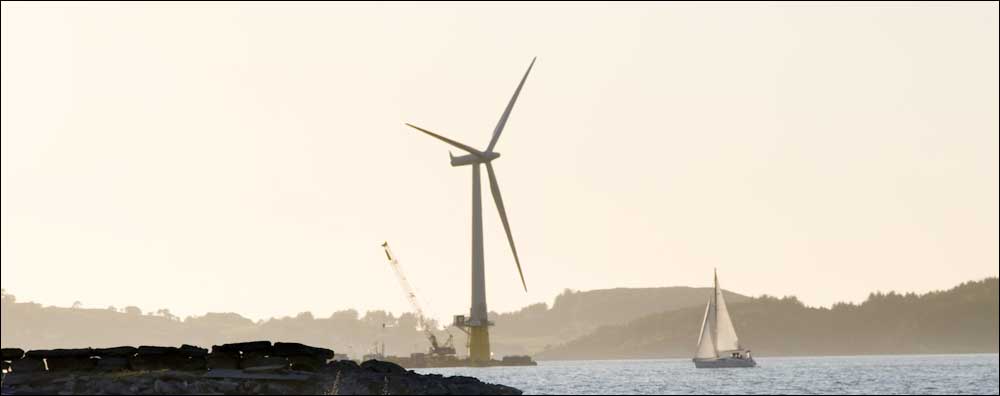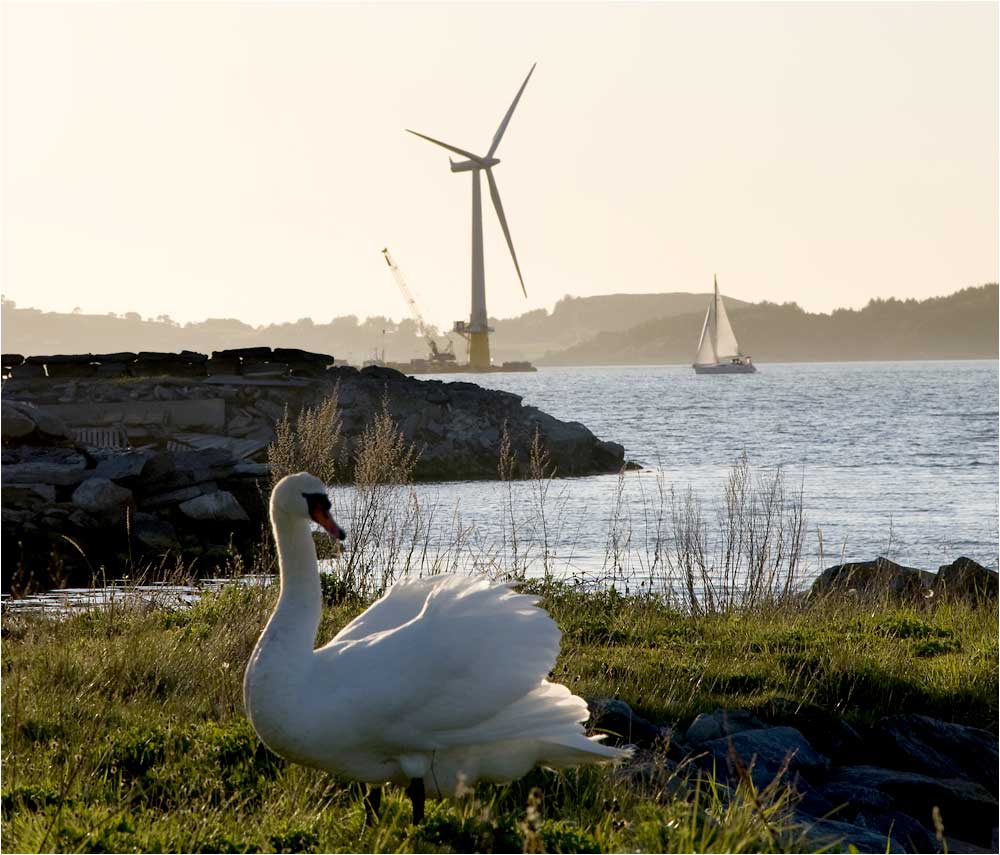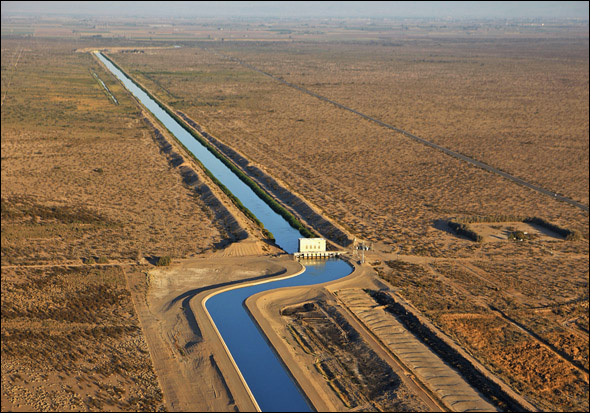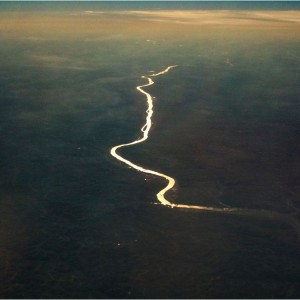Research Program Investigates Norway’s Potential as Europe’s Battery
Norway could use its hydropower reservoirs to balance wind energy in an integrated electrical grid.

In 2008, when it set a goal of sourcing 20 percent of its energy from renewables by 2020, the European Union foresaw a big share for wind power, particularly on the blustery northern seas. A European Commission memo to the European Parliament noted that “offshore wind energy is an indigenous resource for electricity production with a vast potential that remains largely untapped.”
But wind is a fickle source independent from the changes in electricity demand, creating the need to capture and store the excess energy for when the breezes go slack. With storage options such as sodium-sulfur batteries, electric cars and compressed air still financially risky or technologically unviable, European technocrats are setting their sights on another solution — pumped storage, or the coordination of wind turbines and hydropower reservoirs to manage energy flows relative to demand.
They are looking to Norway, a country that gets nearly 100 percent of its electricity from hydropower and holds half of Europe’s reservoir capacity. The Centre for Environmental Design of Renewable Energy in Norway has recently begun HydroPEAK, a research program that will study the scope and limitations of using pumped storage to regulate the European energy grid.
Though results will not be published for three years, the project aims to model an integrated power system and assess new technologies to optimize Europe’s energy potential.
Its centerpiece is pumped storage, a method that uses surplus energy to pump water from a lower reservoir to an upper reservoir when overall demand is low, usually at night. During peak daytime hours, water flows from the higher reservoir through the turbines to the lower. Although the system results in a net energy loss of 20 to 30 percent, it is still more efficient than available alternatives.
In Norway, though, pumped storage operates differently. Reservoirs are re-filled seasonally instead of daily, and energy demands within the country are regulated by starting and stopping the generators.
Greater integration with the continental European grid will require changes to Norway’s hydropower operations and increases in electrical generation.
“The capacity for increased load balancing outside the Nordic system is limited, even if some support is possible today,” wrote Aanund Killingtveit, HydroPEAK’s lead researcher, in an email to Circle of Blue.
If Norwegian reservoirs were to provide load balancing — the storing of excess electrical power for release during peak demand — for wind energy from the United Kingdom and Germany, for example, their generating capacity would need to be expanded by as much as 25,000 megawatts, according to Killingtveit, a professor of hydraulic engineering at the Norwegian University of Science and Technology.
The capacity can be increased by building pumping stations between existing reservoirs, without a need for large and destructive new dams.
Meanwhile, as renewable energy plays a larger role in electricity portfolios, the need for storage capacity to smooth out its bumps becomes vital. In September, for example, Scotland upped its clean energy commitment from 50 percent to 80 percent by 2020. At the same time, Germany’s chancellor Angela Merkel outlined an ambitious plan to increase the country’s share of renewable energy from 16 to 80 percent by 2050.
Der Spiegel, the German magazine, recently reported that Germany’s current installed storage capacity is insufficient to capture the growing renewable output, effectively putting a strain on the development of clean energy technologies in the country.
To achieve its proposed 2050 target, Germany needs to be able to store 25,000 megawatts. It currently has the capacity for 6,400 megawatts, with the potential to add only 2,500 more because of local opposition and a lack of suitable sites.
With domestic options falling short, Germany is looking for more electrical links overseas, to nearby countries like Norway, whose largest reservoir, Blåsjø, has nearly 1,000 times the energy storage capacity of Germany’s champion, Killingtveit said.
The first grid connection between Germany and Norway, the 400-megawatt NORD-LINK, is slated to be completed in 2018. Another high voltage transmission cable, the 1,400-megawatt NorGer, was announced earlier this year.
Meanwhile, Norway’s state-owned electrical grid company Statnett plans to develop four connections with continental Europe by 2020 with a total capacity of 4,200 megawatts.
There is, however, grassroots opposition in Norway to the proposals for new lines and concerns about environmental damage.
“The connections both internally in Norway and to the continent will need to be increased a lot, but power lines are not popular anywhere,” Killingtveit wrote. “Underwater or underground cables are better, but much more expensive, and it could kill the economy for renewable power.”
While those lines will costs billions, analysts at RWE, Germany’s largest power company, estimate that building the generation infrastructure to shift Europe to renewable energy will cost as much as $4 trillion, according to Der Spiegel. The figure does not include the cost of new transmission networks and storage facilities, and is raising doubts about the viability of the renewable energy ambitions.
Sources: Centre for Environmental Design of Renewable Energy, Der Spiegel
Brett writes about agriculture, energy, infrastructure, and the politics and economics of water in the United States. He also writes the Federal Water Tap, Circle of Blue’s weekly digest of U.S. government water news. He is the winner of two Society of Environmental Journalists reporting awards, one of the top honors in American environmental journalism: first place for explanatory reporting for a series on septic system pollution in the United States(2016) and third place for beat reporting in a small market (2014). He received the Sierra Club’s Distinguished Service Award in 2018. Brett lives in Seattle, where he hikes the mountains and bakes pies. Contact Brett Walton








Leave a Reply
Want to join the discussion?Feel free to contribute!